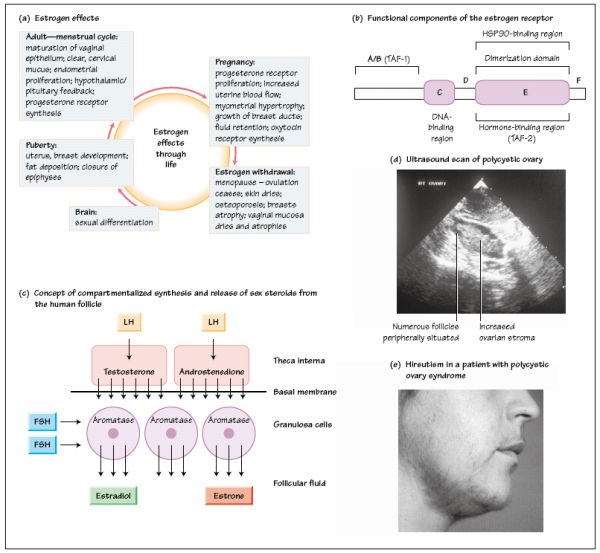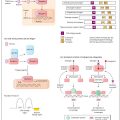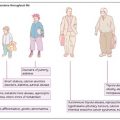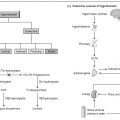
Miss RB, a 24-year-old woman, presented to her GP complaining of increasing hair growth over her chin and face with greasy skin and acne. The hair growth had been present for 5 or 6 years but over the last 2 years had become much worse, such that she was shaving her chin three times a week and using a number of depilatory creams purchased at the chemists. On questioning she revealed that she had also noticed increased hair growth around her nipples, over her lower abdomen and on the lower part of her back. Her periods started when she was 12 years old but she had never had a regular cycle; her periods only occurred every 6–10 weeks and on one occasion she had missed her period for 4 months. She had always been ‘overweight’ but had gained 2 stones in weight over the last 2 years. Her mother had had irregular menses and had been treated for subfertility prior to conceiving RB. Her maternal grandmother had Type 2 diabetes mellitus. On examination RB was found to be obese with a body mass index of 32kg/m2. She had marked androgen – dependent hirsutism and a Ferriman and Galwey score was found to be 16. The diagnosis of polycystic ovary syndrome was confirmed when subsequent biochemical investigations showed her to have a raised testosterone concentration of 3.2nmol/L, LH 14.5 U/L, FSH 3.3 U/L and an ultrasound scan of the ovaries showed bilaterally enlarged ovaries with numerous peripherally sited follicles. After discussion she was treated with diet, exercise and the drug metformin, all of which lower insulin resistance and reduce ovarian androgen secretion. This combination resulted in improvement in the hirsutism and establishment of a more regular menstrual cycle.
Polycystic ovary syndrome is the commonest cause of hirsutism and irregular menstrual cycles. Patients have a long history, usually dating back to the menarche. It is important in the assessment of women with hirsutism to exclude those with a short history and features of virilization that might suggest androgen-secreting tumours of the ovary or adrenal glands.
Physiological actions of estrogens
The effects of the estrogens can be classified in chronological order of the major reproductive events of the female (Fig. 26a). Overall, their main influence is on the maintenance of fertility.
Sexual differentiation. During fetal development, estrogens are not required for the normal differentiation and development of the female genitalia and accessory sex organs, but they are needed for sexual differentiation of the brain.
Puberty.
Stay updated, free articles. Join our Telegram channel

Full access? Get Clinical Tree








